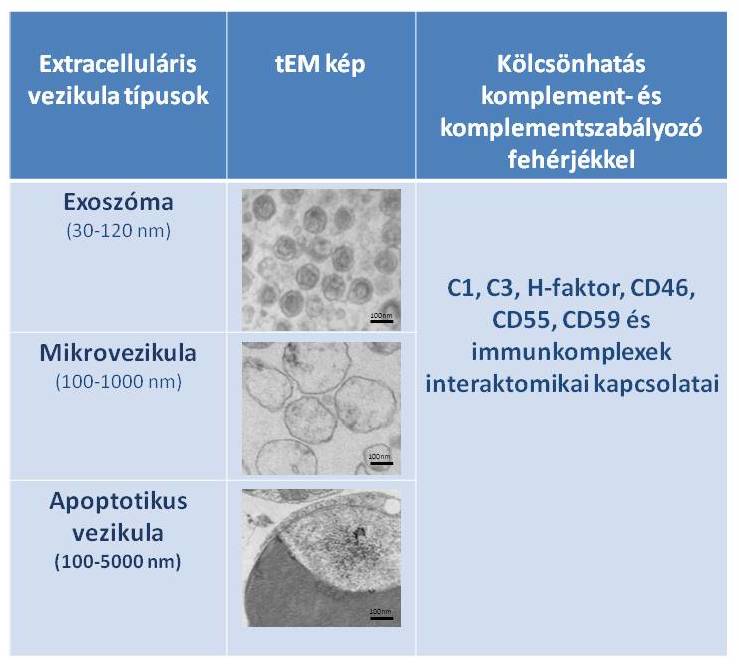Studies on the interaction of extracellular vesicles with proteins of the complement system
Extracellular vesicles are phospholipid bilayer bound submicron structures secreted by cells actively, in an evolutionarily conserved fashion. Extracellular vesicles (exosomes, microvesicles and apoptotic bodies) are known to pass through blood-tissue barriers, and accumulating data suggest that they may be important factors in the development of several diseases. Once released into the extracellular space, these vesicles may interact with various cells and molecules of the body, including protein components of the complement system.
The complement system is one of the major protective systems of the body that includes numerous soluble protein components, and it is part of the innate immunity. Complement proteins have been implicated in the pathogenesis of various diseases for decades. In this project we will try to find an answer to the following questions: i) do different types of extracellular vesicles activate complement, ii) if yes, which complement proteins do they bind, and iii) what is the functional consequence of binding of different complement- and complement regulatory proteins to the surface of extracellular vesicles (e.g. under inflammatory conditions).
One of the interacting research teams of this project is lead by Edit Buzás at Semmelweis University. This group has expertise in the state-of-the-art methods to isolate and characterize extracellular vesicles. Integration of this methodological and infrastructural background with that of the complement team of MTA-ELTE (led by Mihály Józsi), may provide a unique opportunity for the first systemic, artifact-free analysis of the interaction of complement proteins with extracellular vesicles.

Edit Irén Buzás - Mihály Józsi
